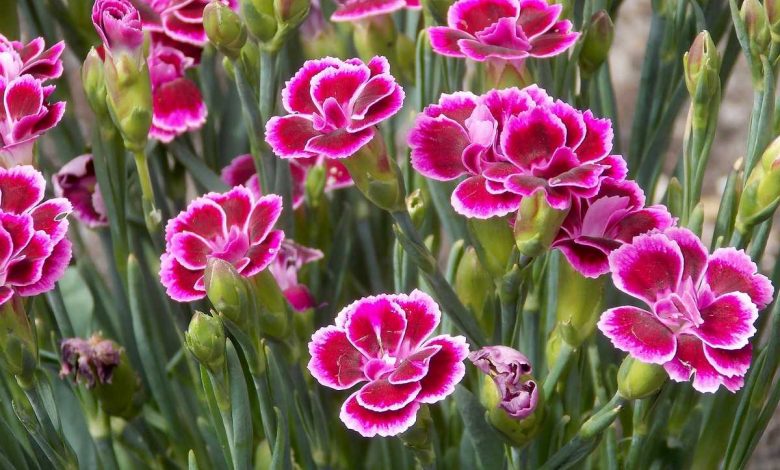
Native to the Mediterranean basin, carnations bloom for several months in a row in summer without requiring much maintenance. Decorative, some form elegant cushions and are perfect in a gravel garden while others, taller, are superb in a border or pot. Almost all are perennials.
What you need to know:
Botanical name: Dianthus
Common name: Carnations
Family: Caryophyllaceae
Height: Varies according to species, from 15 cm to 70 cm
Foliage : Persistent or semi-perennial. The linear leaves are green, silvery, more or less blue gray or green gray.
Flowering: There is a great diversity of forms according to the species, with simple or double flowers, with toothed or laciniated petals. The most classic carnations have white, pale pink, bright pink, carmine pink or purple red hues. They are beautiful flowers to cut, often very fragrant.
Exposure: In the sun, even hot.
Soil: Good, non-acidic, even slightly chalky, well-drained garden soil is best for carnations. Horticultural varieties like rich soil, whereas botanical carnations are content with poorer soil, even stony soil.
Hardiness: -15 to -20°C for most species.
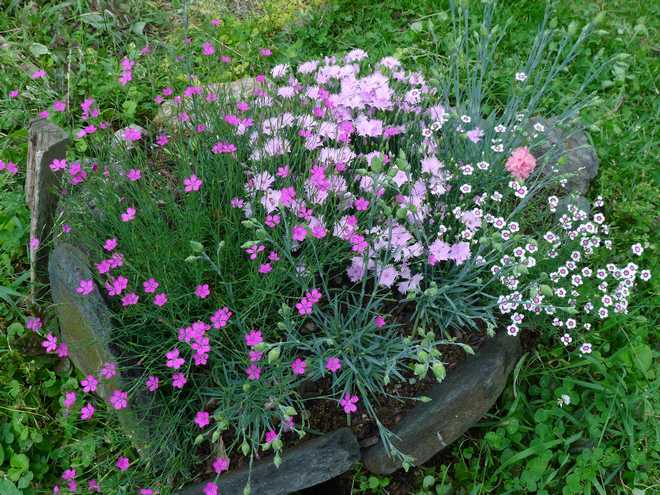
Sowing of the carnations of poet
The poet’s carnation is the least perennial and is even rather biennial. This is the reason why it is sown.
This sowing is carried out in March, ideally in terrines or small pots placed under frame (between 10 and 15°C).
- Place a few seeds on the surface of the soil
- Pack the soil with a wooden board.
- Water without excess with a small sprayer.
- At the emergence, thin out and transplant the plants having 2 to 3 leaves in individual cups.
Planting Dianthus carnations in the ground
It is done in autumn for the perennial species, rather in April – May for the seeded plants, in a well drained soil, even dry.
If the soil is too wet, do not hesitate to mix gravel or plant them on a mound or in raised borders of 10 to 15 cm to ensure better drainage.
Maintenance of garden carnations
Regular fertilization is necessary to stimulate a beautiful bloom.
During the summer, water the clumps in quantity but space out the watering.
Carnations appreciate fall applications of potting soil or compost to improve the soil, although many species are content with poor, dry soil.
To limit the drying out of the soil, you can spread a mulch 10 to 15 cm thick around the plants. In a mineral garden, use a decorative gravel, elsewhere, grass clippings are very suitable. Avoid pine bark which acidifies the soil.
Regularly cut back faded flowers to renew the bloom all summer long and allow the leaves to develop properly without being hindered by numerous dry stems.
On the other hand, never prune the leaves, except when the clump dries and turns brown.
Carnations are robust plants that rarely get sick.
The tallest carnations need discreet staking, otherwise they will lie down!
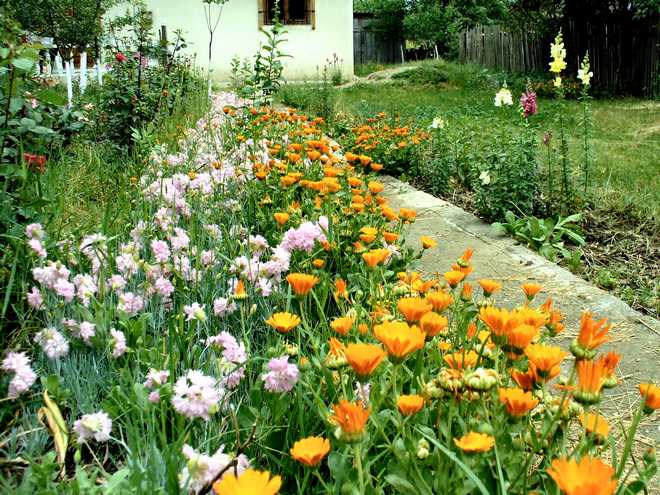
Growing Carnations in a Pot
Small carnations do well in a 20 cm diameter pot or in a large planter.
Plant them in a mixture of ⅓ garden soil, ⅓ horticultural potting soil and ⅓ gravel.
Then watch the watering and add fertilizer to get them to bloom.
Notable varieties of carnations
These classic perennials are classified into 2 main families:
- Horticultural carnations have been selected over the centuries for cut flower production. They appreciate rich soil and regular fertilization.
- Botanical carnations are wilder and more rustic, and are carpeted. They are rock garden carnations. They form cushions covered with flowers between June and July. Less greedy, they grow in poor, dry but not acidic soil.
Varieties of horticultural carnations
- Florist’s carnation (Dianthus caryophyllus): very flowery, it is an ephemeral perennial.
- Carnation mignardise (Dianthus plumarius): this classic plant forms a thick cushion of flowers from May to August. Single or double flowers are available in many colors. They are perfect cut flowers for bouquets. This perfume, more or less peppery according to the varieties, is diffused especially in evening if the afternoon was well sunny.
Height : 20 to 30 cm
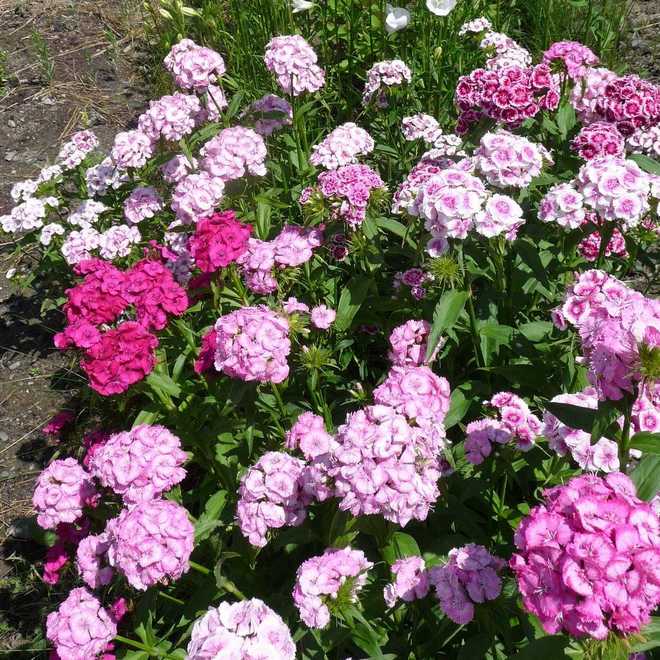
Poet’s carnation (Dianthus barbatus): More fragile than the others, it is biennial but covers itself with numerous flowers that please the butterflies.
Height: 20 to 70 cm
Chinese carnation (Dianthus chinensis): It forms small clumps of gray-green leaves, covered from April to September with flowers grouped in very colorful clusters.
Height: 15 to 30 cm
Varieties of botanical carnations
Alpine carnation (Dianthus alpinus) : it develops a cushion of leaves from which pink flowers spotted with a purple heart stand out in July and August.
Height : 10 to 20 cm
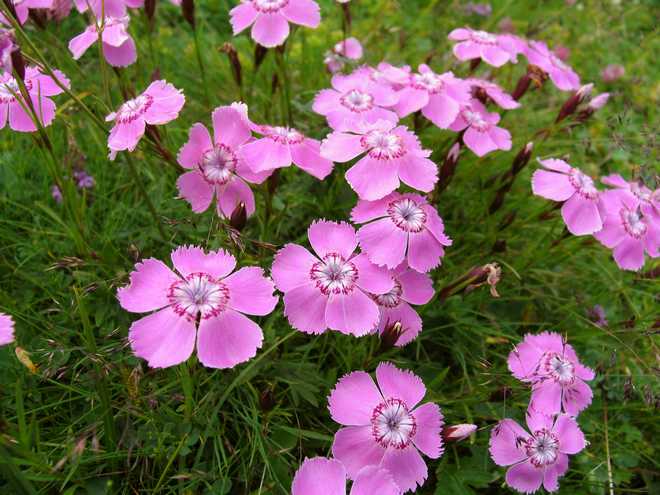
Bluish carnation (Dianthus grationapolitanus): it forms a cushion covered with flowers at the beginning of summer.
Height: 10 to 20 cm
Delta carnation (Dianthus deltoides) also known as a reclining carnation, its very dense foliage disappears in summer under numerous pale pink, white or red flowers.
Height : 10 to 20 cm
The superb carnation, for acid and humid soil
In this vast family, the superb carnation (Dianthus superbus) is an exception. It is indeed the only one able to grow well in acid and wet soil. Its large white or pink flowers, with laciniated and very perfumed petals, bloom from June to September.
How to use carnations in the garden?
Plant florists’ carnations, mignardises and poets’ carnations in beds. They will do well there if they have sun and good garden soil. They are also perfect to place at the edge of a path, next to marigolds, nigellas, poppies, high cosmos or verbenas.
In a rock garden, above a low wall or in a gravel garden, botanical carnations are more suitable.
In a pot or window box, choose Chinese or florist carnations. They bloom generously as long as they are fertilized.
Finally, on the banks of a small stream, a pond or a basin, the superb carnation is in its place. It is the only one that can withstand so much humidity, but to keep it for a long time, it should not be placed with its feet completely in the water.
The cutting of the carnation: a child’s play!
The carnation is one of the easiest plants to propagate.
Take your cuttings in late spring, as soon as the first flowers fade.
- On healthy plants, take young stems from the leaf axils with a sharp knife. For best results, make sure they do not have flower buds.
- Remove the lowest leaves; keep only the top 3 or 4.
- Transplant these prepared cuttings into a bucket, in a mixture of 2⁄3 of potting soil and ⅓ of garden soil. Bury the stems down to the leaves so they become covered with small roots.
Another way to propagate them or strengthen somewhat fragile plants is to take advantage of the elongation of the creeping stems. Cover the center of the clump with 1 to 2 shovels of garden soil. It is in fact a layering! The stems will root quickly and you will be able to recover new plants to give away or to install elsewhere
Did you know that?
In ancient times, people wove carnation garlands to honor the God Jupiter. The famous botanist Linnaeus took this custom into account when he named the plant Dianthus. It means Flower of Jupiter.
